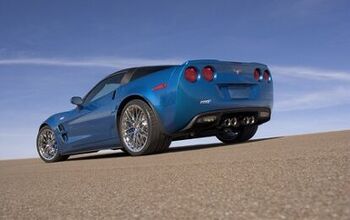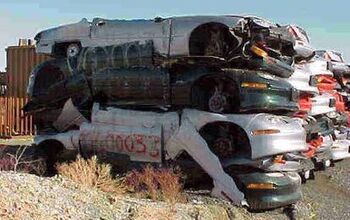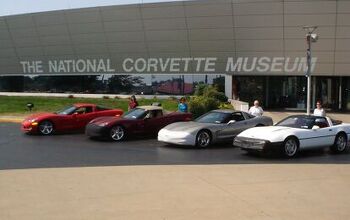Who Killed The Camry?

Blame the Rebels.
Nissan’s Rogue was the best-selling vehicle without a pickup bed in December of 2016, largely thanks to a massive advertising campaign that tied into one of the two recent Star Wars movies where only teenaged girls can be trusted to save the universe. Behind it, you had the usual suspects: CR-V, RAV4, Camry, Accord, Civic, Corolla. But even that state of affairs is a major change from business-as-usual a decade or two ago.
You can learn a lot about American society by looking at the best-selling car in any given year. So if we discount the Rogue’s Yavin IV-style moonshot performance, what’s changed about us since, say, 1967 — and what’s stayed the same? More importantly, who killed the Camry?
Once upon a time, the best-selling car in the America was the Ford Model T. This makes perfect sense, because the Model T was an utterly perfect device for putting a country on wheels for the first time. Simple, easy to operate, and hugely capable, the T was everybody’s first car well into the postwar period.
After that, the best-selling car in America was generally the full-sized “standard” Chevrolet. In 1965, it moved over a million units, making it nearly twice as popular as the overnight-sensation Mustang. It wasn’t until the Seventies that the Cutlass Supreme made a play for the top slot, mostly on the strength of the hugely popular coupe variant. The Chevy Citation and the Ford Escort were best-sellers after that.
By 1990, however, the holy trinity of Taurus, Accord, and Camry were in charge of affairs. The Camry eventually took the top spot and held it, on and off, for 20 years, easily fighting off a production-constrained Accord and a, um, demand-constrained Taurus. Wildly popular expansions to the lineup, like the hybrid model and the SE/XSE, should have ensured the Camry’s hegemony among actual passenger cars well into the supposedly inevitable electric-car transition phase.
Instead, the catfish-faced juggernaut finds itself scrapping with CUVs and subcompacts for a top-five slot. What’s going on? There are a few different theories that might apply.
Let’s call the first theory Lowered Expectations/Bigger Subcompacts. In this theory, Americans are short on money and optimism, so they’re making the move from the Camry to the Corolla. (The same holds true for the Accord, which is beaten in the sales charts by the Civic as often as it is not.) Surely this was why the Ford Escort took the top spot 35 years ago; a country drunk on long-hood expressions of personal-luxury power woke up the morning after the party and found a note from the President telling them to wear a sweater in the winter and choose a fuel-efficient car.
The relatively painless process of downsizing to the not-so-subcompact class has only been helping matters; a modern Corolla is really as big as an old Camry, and the new Civic is positively gargantuan. So this could be the winning theory, right off the bat.
The next explanation? How about Boomers Riding High. The Camry and Accord have long been mainstays of the Woodstock generation, but getting behind the wheel of one becomes much more difficult when you’ve got an artificial knee or a bad hip. Enter the CR-V and RAV4, which aren’t nearly as good at doing actual car things but offer the same kind of easy entry and exit the Boomers all remember from the Summer of Love. Certainly the sales leadership of what were once very niche vehicles (the RAV4 was originally marketed to ‘action sports’ types) offers support to this idea.
Last but maybe not least, we’ve got The American Snowflake. Deep inside, all of us know that we are very special people who deserve unique, curated experiences. Midsized sedans just don’t offer those curated experiences, do they? They’re the cars of our parents and our grandparents, people who were busy doing stupid, racist stuff like making America the leading economic power in the world and/or protecting it from the now-discredited Communist menace. We are too good to drive a Camry. The only way we can demonstrate our specialness is to drive something completely unique and amazing like a Prius or a RAV4, neither of which could ever be confused for regular, boring, transportation appliances like a Camry. Our active lifestyles demand ground clearance. Kaden’s soccer field has — you won’t believe it, Rechell! — unpaved parking.
Those are the theories. Which is correct? Maybe it’s all of them. But I yearn for a world where none of them would have any power whatsoever. I think about what Americans were expressing when they made the mighty V8-powered Cutlass Supreme (yes, I know not all of them were V8-powered) the nation’s leading car. I thrill to think of a country that would make a two-ton four-seater its favorite whip. We had style back then. But in a world where the automobile is increasingly seen as a problem to be solved, rather than an escape to freedom, who wants style? When our heroes are teenaged girls, why wouldn’t we be satisfied with a nice, safe, mommy’s-basement car like the RAV4?

More by Jack Baruth
Latest Car Reviews
Read moreLatest Product Reviews
Read moreRecent Comments
- ToolGuy This thing here is interesting.For example, I can select "Historical" and "EV stock" and "Cars" and "USA" and see how many BEVs and PHEVs were on U.S. roads from 2010 to 2023."EV stock share" is also interesting. Or perhaps you prefer "EV sales share".If you are in the U.S., whatever you do, do not select "World" in the 'Region' dropdown. It might blow your small insular mind. 😉
- ToolGuy This podcast was pretty interesting. I listened to it this morning, and now I am commenting. Listened to the podcast, now commenting on the podcast. See how this works? LOL.
- VoGhost If you want this to succeed, enlarge the battery and make the vehicle in Spartanburg so you buyers get the $7,500 discount.
- Jeff Look at the the 65 and 66 Pontiacs some of the most beautiful and well made Pontiacs. 66 Olds Toronado and 67 Cadillac Eldorado were beautiful as well. Mercury had some really nice looking cars during the 60s as well. The 69 thru 72 Grand Prix were nice along with the first generation of Monte Carlo 70 thru 72. Midsize GM cars were nice as well.The 69s were still good but the cheapening started in 68. Even the 70s GMs were good but fit and finish took a dive especially the interiors with more plastics and more shared interiors.
- Proud2BUnion I typically recommend that no matter what make or model you purchase used, just assure that is HAS a prior salvage/rebuilt title. Best "Bang for your buck"!


































Comments
Join the conversation
This is a late comment but I'll weigh in by saying Australian fleet buyers are Camry's prison bitch. A casual observer will see that this wide, brown land won't let the sun set until everything you reverse into or trip over is a Camry Cop car.
I don't think the fad toward steeply raked A pillars and low roofs is a good thing. I drove a Matrix for 12 years and love the ease of entry/exit, and the practicality. I can't get in and out of an iM. The topic is Camry, but I think the principle applies.